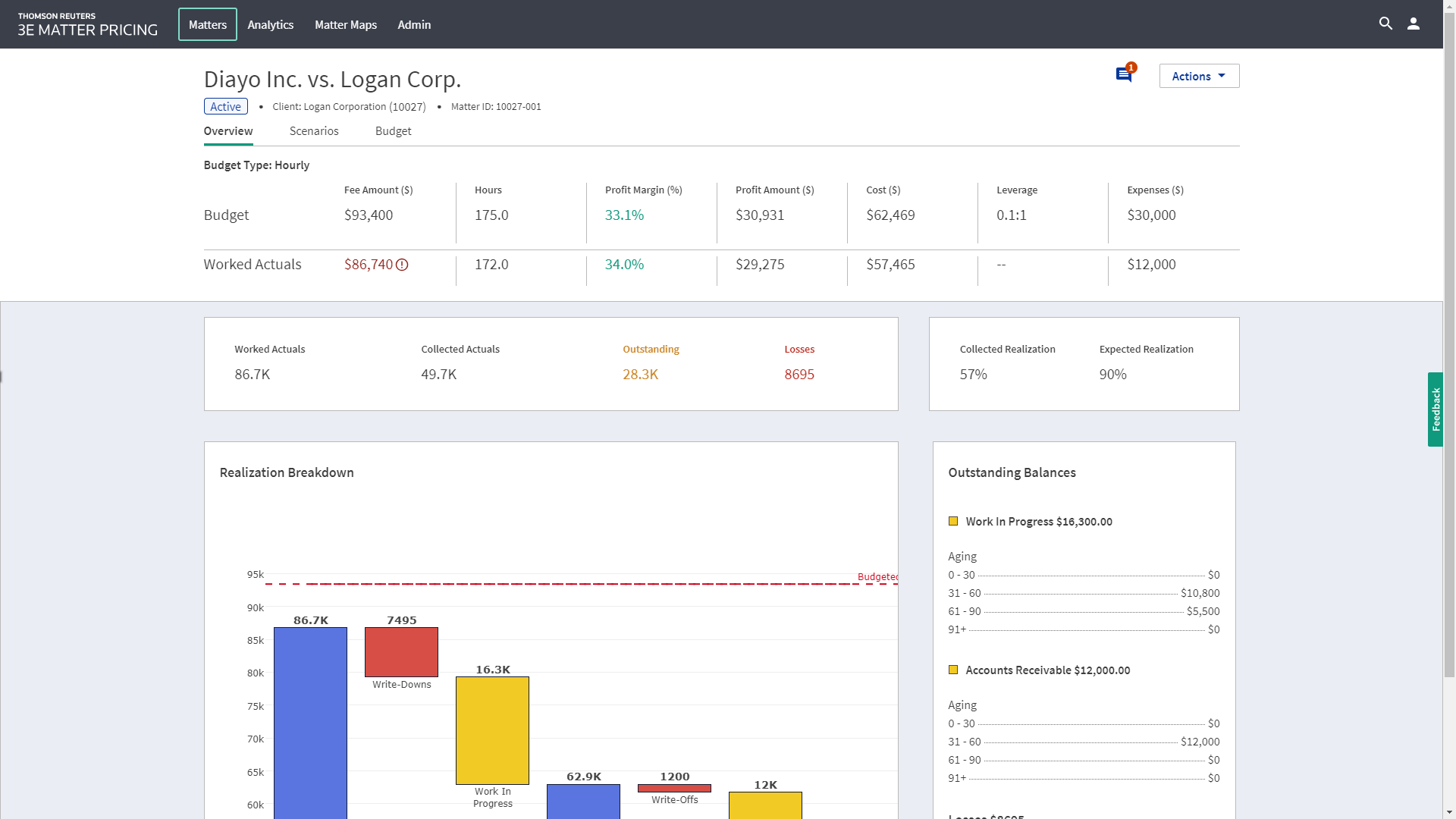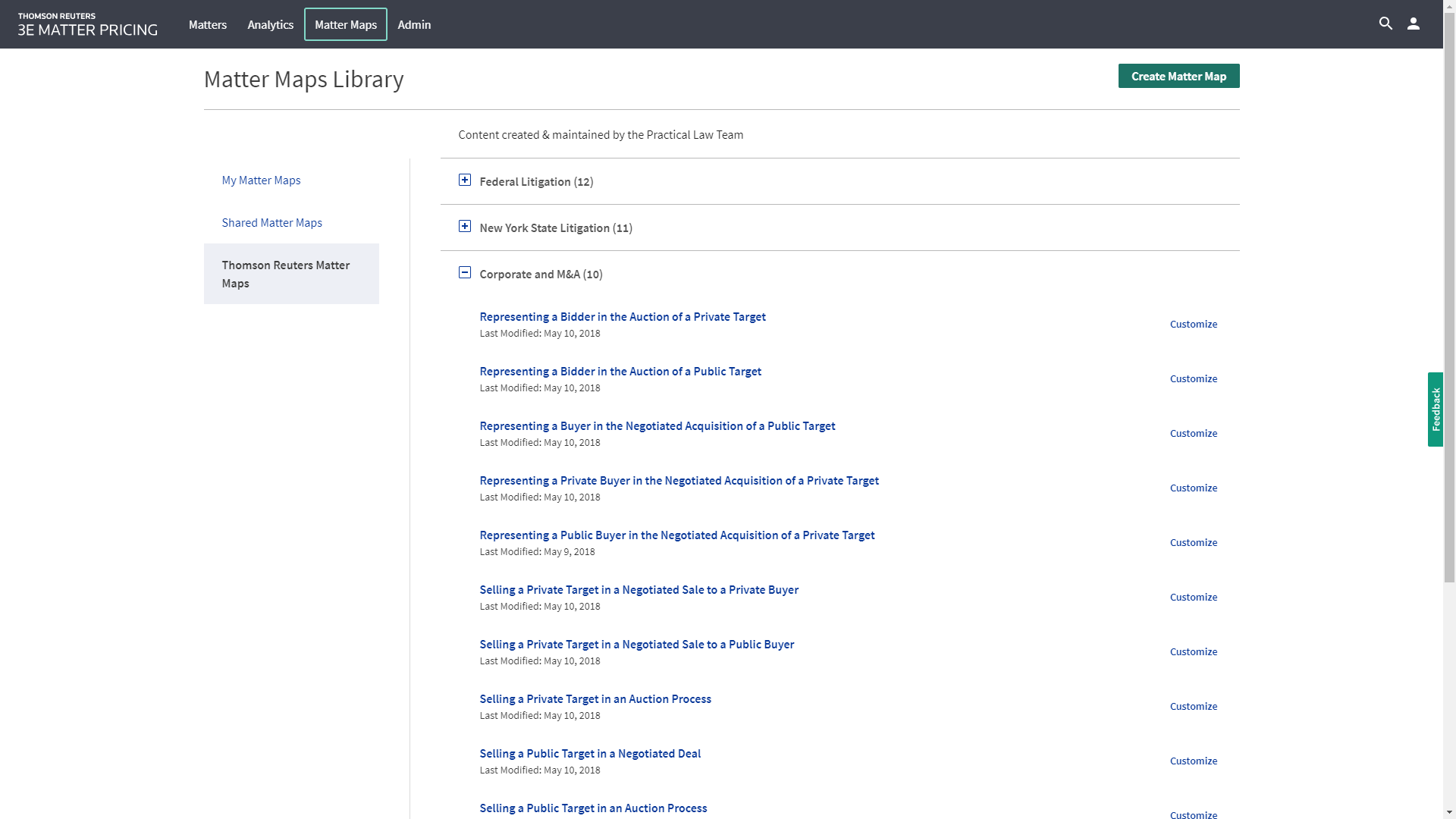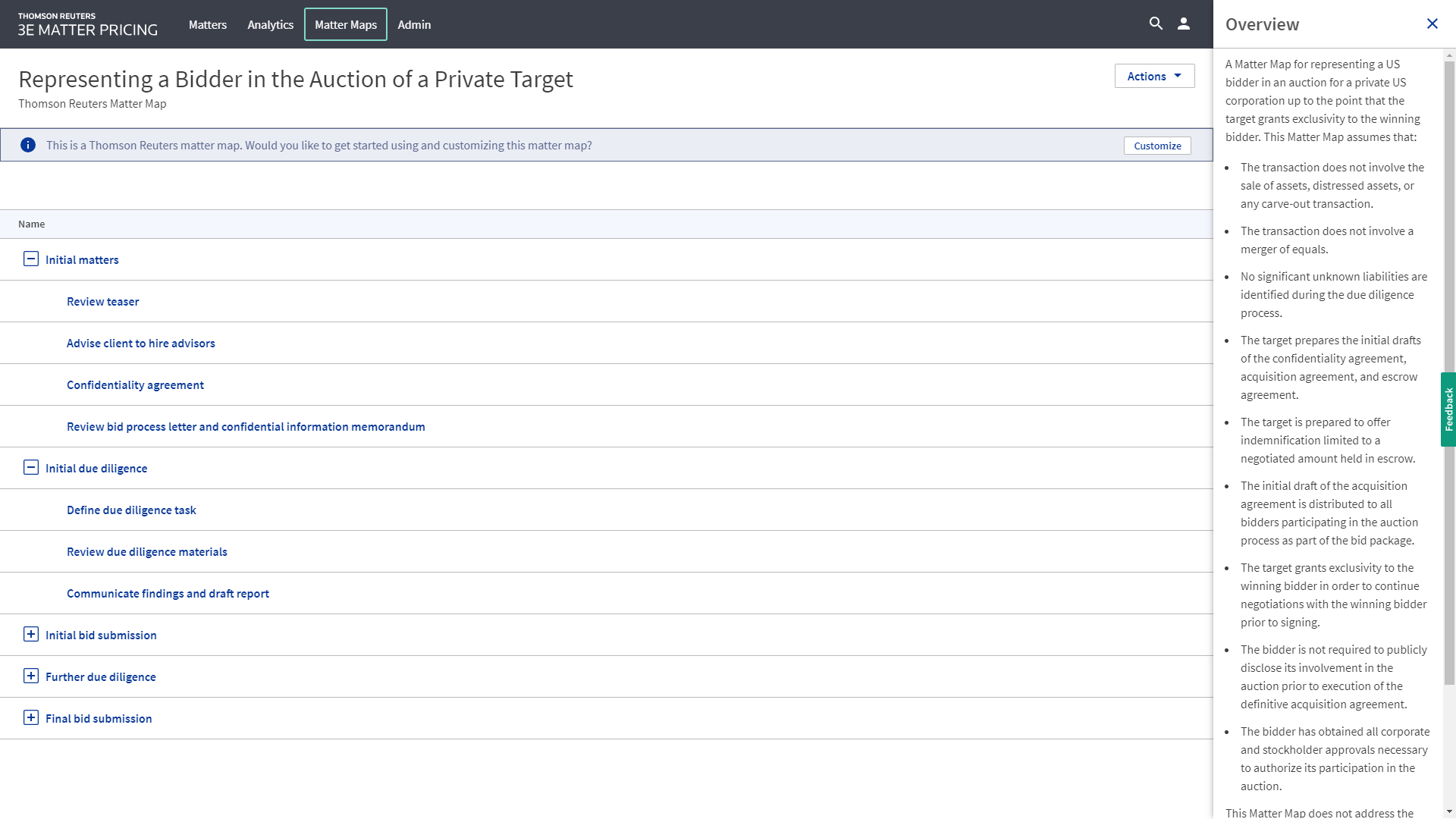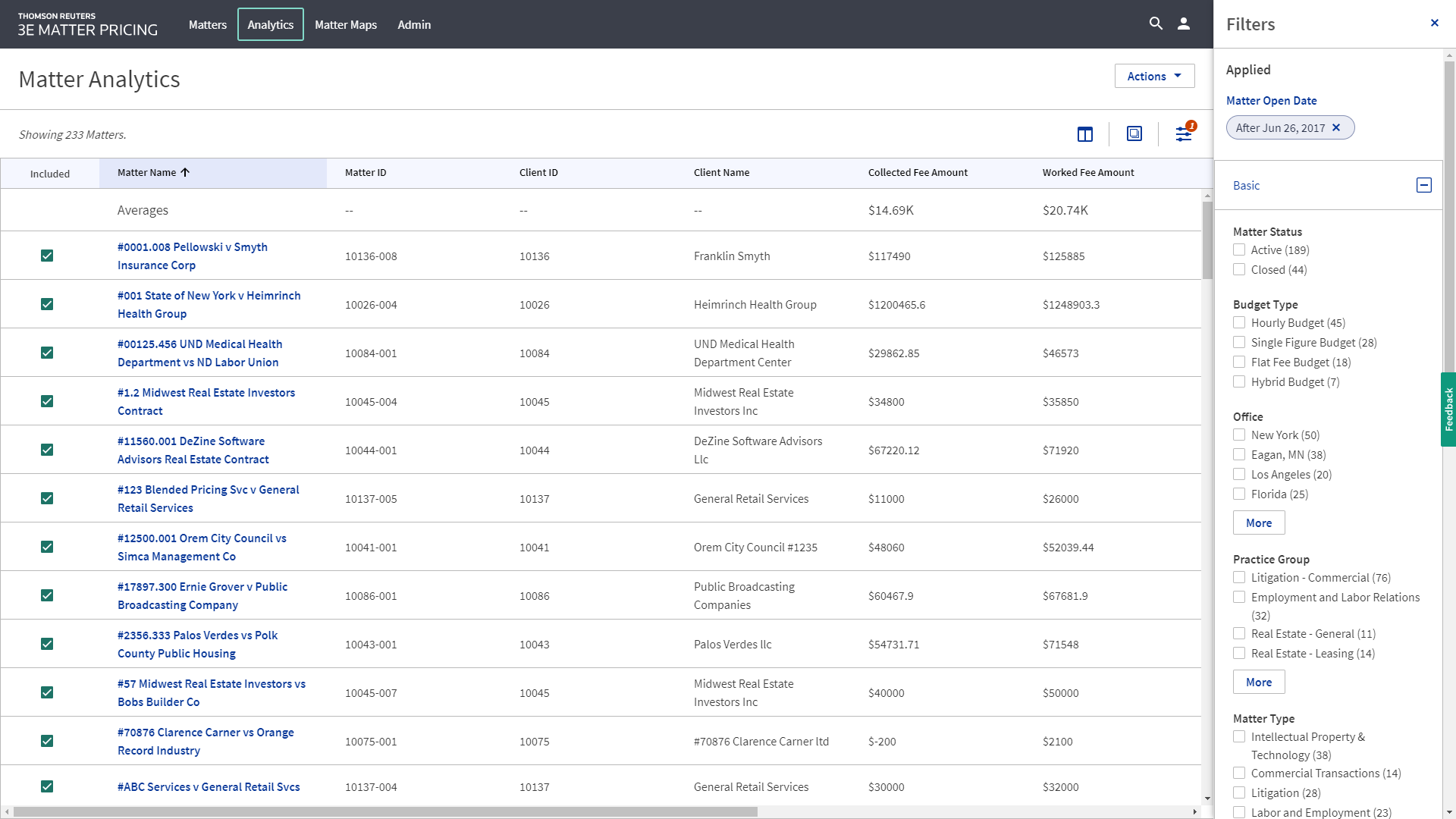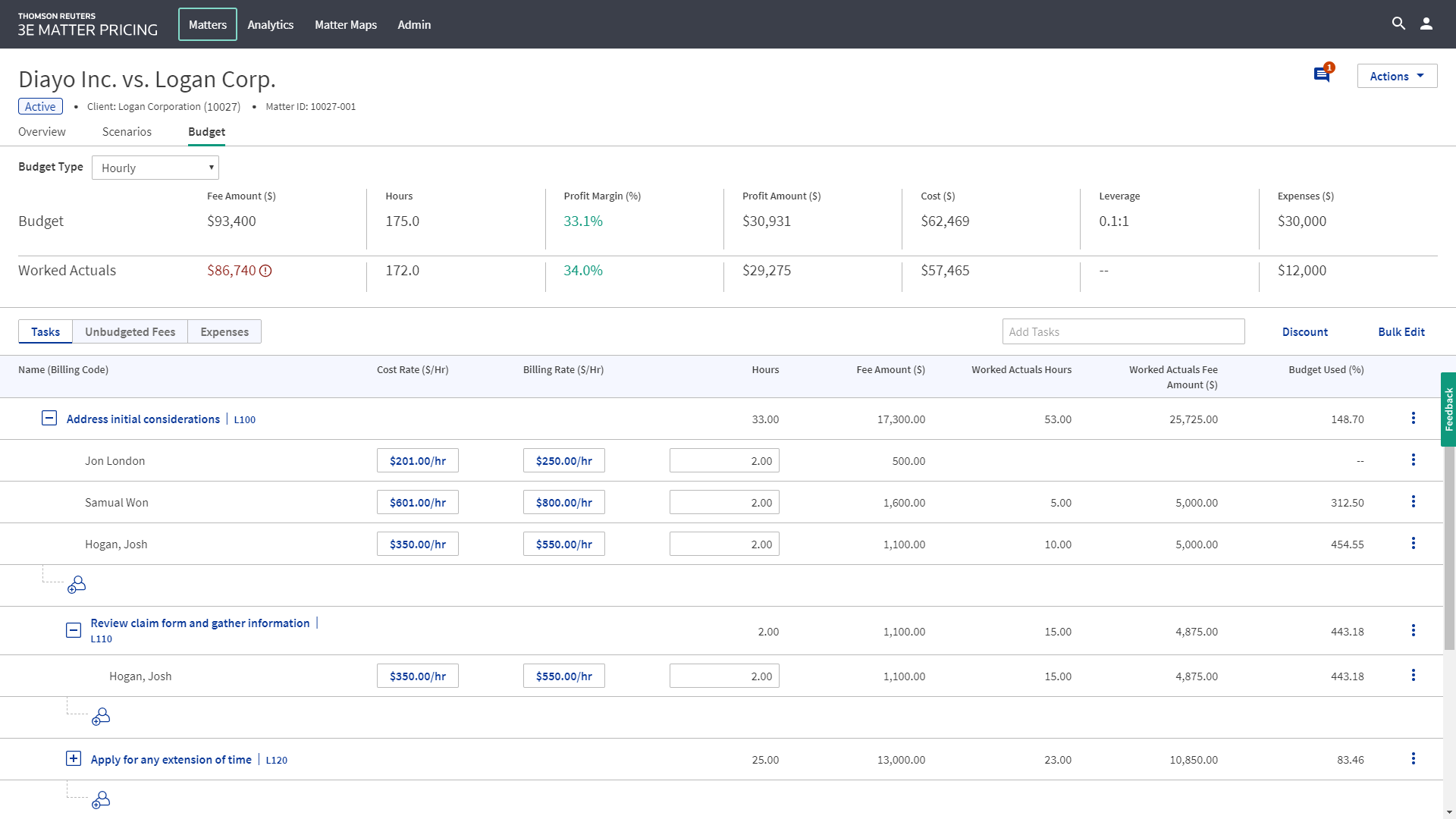Budgeting legal matters is the bane of many a law firm. Whether creating a budget for an hourly matter or setting a price for a fixed-fee representation, firms fear setting prices too low or too high.
A new cloud-based product from Thomson Reuters Elite, 3E Matter Pricing, provides a suite of tools intended to help firms more accurately plan, track and analyze matter budgets. It integrates with 3E, Elite’s business management system for law firms, to extract key financial data — such as fee earners, rates and billing information — to allow lawyers and pricing professionals to price different scenarios.
Thomson Reuters developed the product in order to help law firms address the need to sell their value differently and engage in more-informed discussions around pricing, both internally and with clients, Elisabet Hardy, vice president, product management and marketing, told me during a demonstration last week. For that reason, TR wanted to create a product that would be accessible to both a firm’s lawyers and its pricing professionals.
To that end, a key feature of 3E Matter Pricing is that it is designed to be lawyer-friendly. It provides various tools to help lawyers more easily set matter budgets, such as the ability to recall budgets from past matters and to try out different pricing scenarios. Pricing can be done for both hourly and fixed-fee matters, and can be broken down by phases, phases and tasks, and resources.
Unique to this product are more than 50 Matter Maps. These map out the key phases and legal tasks in common legal matters, and can be used as guides when beginning the budgeting process. The maps were created by legal editors from Thomson Reuters Practical Law and are kept up to date to reflect changes in the relevant law. (Each map displays the date it was last updated.)
Emily Colbert, the vice president of product management who oversaw development of 3E Matter Pricing, said the idea for this came from a customer at a law firm who wanted something to work from in initially setting up budget templates for different types of matters. Users can start with one of these guides and customize it as needed. The user can begin with the full map or pull in only the phases and tasks that are needed.
Once budgets are set, the main page for a matter shows its financial metrics. These include revenue, profitability, actual hours, work in progress, accounts receivable and collections. This lets users monitor where they are in executing the budget and enables them to make more informed decisions about current and future finances related to the matter.
In creating a budget, the product lets the lawyer create different scenarios to determine what is optimal for the firm in terms of ensuring that a matter is profitable. Because the product functions as a module of 3E, it provides access to all the information about billing rates and timekeepers. But this information can also be added or modified from within the product.
As noted above, 3E Matter Pricing enables users to recall budgets from past matters and use them as templates or guides for new matters. A possible use case for this would be setting a flat-fee budget for a particular type of matter where the firm had previously set a flat fee in a similar matter. Users are able to apply a number of filters to previously created budgets — such as practice group, office location, and budget type — to find a prior budget. Once found, a copy button enables the user to replicate it for a new matter.
The product, Hardy said, was designed by lawyers and is meant to be used by lawyers. “We made sure it’s a product that can be used by lawyers without a ton of training,” she said.
Bottom Line
A road block keeping many lawyers from wider use of fixed-fee billing is the difficulty of setting prices in a way that will ensure the matter is profitable. 3E Matter Pricing appears to be a tool that can help lawyers get around that roadblock and achieve greater certainty in setting matter budgets. That should be a good thing for both firms and clients.
 Robert Ambrogi Blog
Robert Ambrogi Blog